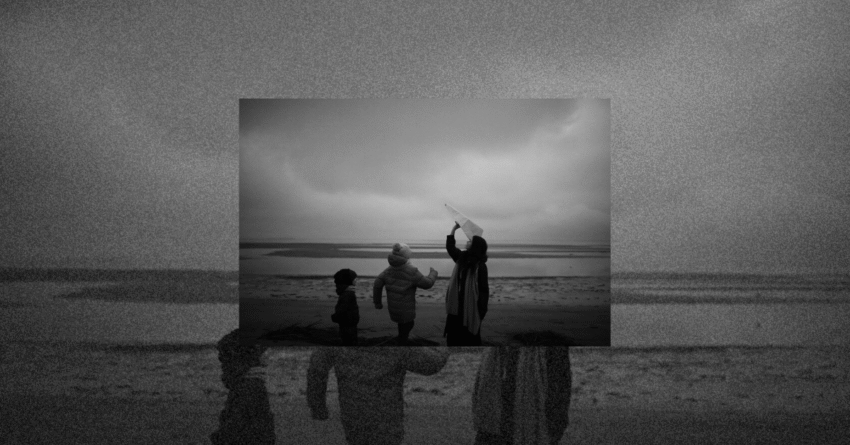Let’s get real—your childhood is not just a chapter you leave behind. It’s the blueprint your brain uses to navigate love, trust, boundaries, and belonging in adulthood. And whether you’re aware of it or not, the way you relate to people today often echoes the emotional environment you grew up in.
That uncomfortable tension in your romantic relationship?
That fear of abandonment that seems to pop up out of nowhere?
That tendency to push people away just when they get close?
Yeah, it might go way back. Like childhood back.
Let’s dive into what psychology says about how your early years quietly script your adult relationships—and what you can actually do about it.
The First Bond: Attachment Theory 101
According to attachment theory, our first emotional bonds—usually with our parents or primary caregivers—set the tone for how we connect with others later in life.
These early bonds create what’s called an attachment style. Think of it as the emotional lens through which you interpret love, safety, and connection.
Here are the four main styles:
- Secure Attachment
If you grew up with consistent love, comfort, and emotional safety, chances are you trust others easily, communicate well, and form stable relationships. - Anxious Attachment
If love felt inconsistent or unpredictable growing up, you may crave closeness but constantly fear rejection. This shows up as clinginess, overthinking, or needing constant reassurance. - Avoidant Attachment
If you were taught to be emotionally independent too early or felt rejected when vulnerable, you may downplay emotions and struggle with intimacy or vulnerability. - Fearful-Avoidant (Disorganized) Attachment
This often stems from trauma. You want closeness but fear it at the same time, creating a confusing push-pull dynamic in relationships.
And here’s the twist: we don’t choose these styles. They choose us—shaped by our earliest emotional experiences.

How Childhood Wounds Show Up in Adult Love
You may not consciously remember everything from your childhood, but your nervous system does. Here’s how those early experiences sneak into your adult dynamics:
- If you were ignored, you might now fear being invisible.
You may overcompensate by becoming a people-pleaser or staying in relationships where your needs are never met. - If you had to “earn” love with good behavior, you might now think you’re only lovable when you’re useful.
You become the fixer, the giver, the over-functioner. You attract people who take, but rarely give. - If love was conditional, you might now walk on eggshells in relationships.
You keep your true feelings hidden to avoid conflict or abandonment. - If you were shamed for expressing emotions, you might now struggle to open up.
Even when you want to be vulnerable, your body tenses. It feels unsafe—even when it’s safe now.
It’s Not About Blaming Your Parents
Let’s be clear: this is not about finger-pointing. Most caregivers did the best they could with what they had.
But recognizing the emotional blueprint you inherited is about liberation, not blame. It’s about realizing that you’re not broken—you’re patterned. And patterns can be rewritten.
Signs Your Inner Child Is Running the Show
Still wondering if your childhood is affecting your adult relationships? Here are some telltale signs:
- You struggle to trust even the people who’ve earned it.
- You shut down during conflict or feel panic when someone pulls away.
- You replay the same unhealthy relationship dynamic again and again.
- You attach too quickly—or not at all.
- You mistake emotional chaos for passion.
- You feel unworthy of healthy, secure love.
Sound familiar? You’re not alone. This is so common—and totally workable.
Rewriting the Script: Healing Is Possible
Here’s the good news: your past may shape you, but it doesn’t have to define you.
Psychology gives us more than just explanations—it offers tools for change. Here’s where you can start:
- Awareness Is Step One
Start paying attention to your emotional triggers in relationships. When you feel abandoned, unloved, or overly anxious—pause. Ask, “What does this remind me of?” - Reparent Your Inner Child
This means giving yourself now what you didn’t get then. More compassion. More patience. More emotional safety. You don’t need to wait for someone else to validate you—you can start showing up for yourself. - Set Boundaries—Even With Yourself
Did your childhood normalize boundary-less environments? Learn to say no. Learn to pause before people-pleasing. Learn that your needs matter too. - Choose Partners From Your Healed Self
When you begin healing, your “type” might change. You’ll stop being drawn to what’s familiar (even if it’s dysfunctional) and start choosing what’s actually healthy. - Therapy Helps—A Lot
Working with a therapist can help you unravel the threads of childhood trauma, attachment wounds, and relationship patterns in a safe, nonjudgmental space.

Final Thoughts
Maybe you didn’t grow up with emotional security, healthy modeling, or safe love.
But you’re here now. Learning. Reflecting. Healing.
That in itself is powerful.
You don’t have to repeat the patterns you were handed. You can learn how to show up differently—in your relationships and in your relationship with yourself.
Because love doesn’t have to feel like walking on eggshells.
Connection doesn’t have to come with anxiety.
And being close to someone doesn’t have to cost you your peace.
It starts with understanding where you came from—and deciding where you want to go next.
And trust me, that choice? That’s always yours to make.
